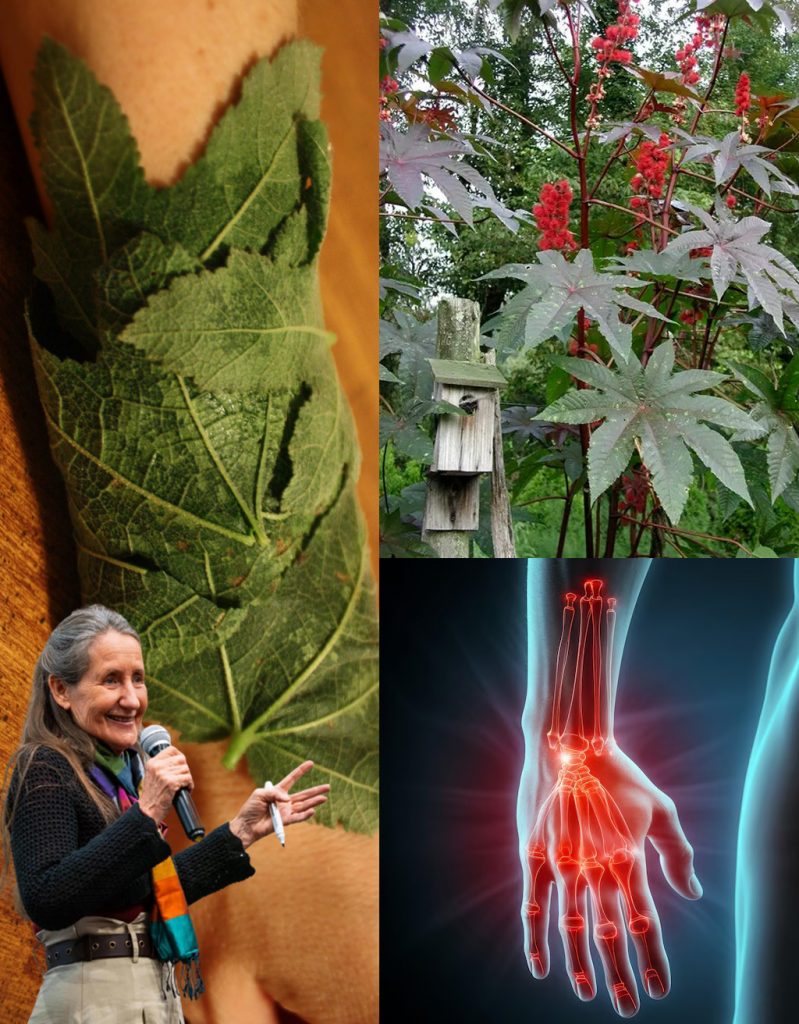The Castor plant, particularly the oil extracted from its seeds, has a long history of use in traditional medicine (Ayurveda, Unani, etc.) due to its potent anti-inflammatory, antimicrobial, and purgative properties.

However, it is crucial to understand that the whole castor seed is highly toxic and poses a serious health risk.
I. CAUTIONARY WARNING: The Toxin Ricin
The most important fact about the Castor plant is that its whole seed contains Ricin, a highly potent water-soluble toxin.

- Toxicity: Swallowing even a few whole, chewed castor seeds can be fatal to an adult. Ricin is a poison that is entirely separate from castor oil.
- Safety of Castor Oil: Castor oil is generally considered safe for use as it is manufactured by pressing the seeds, and the heating process used in extraction denatures (destroys) the toxic protein Ricin.
II. Benefits of Castor SEEDS (Oil)
The medicinal uses of castor are overwhelmingly linked to the oil extracted from the seeds, which is rich in Ricinoleic Acid.

| Benefit Area | Traditional / Scientific Use | Mechanism |
| 1. Powerful Laxative | FDA-approved use for relieving constipation and for colon cleansing before medical procedures. | Ricinoleic Acid stimulates the smooth muscle of the intestinal walls, increasing bowel movement (a cathartic effect). |
| 2. Anti-Inflammatory / Pain Relief | Used topically as a castor oil pack for relieving muscle soreness, joint pain, nerve inflammation (sciatica), and symptoms of arthritis/rheumatism. | Ricinoleic acid exhibits significant anti-inflammatory and analgesic (pain-relieving) effects. |
| 3. Skin and Hair Moisturizer | Used topically for general skin moisturizing, fighting fungal infections, treating skin inflammation, and promoting hair growth (eyebrows/lashes). | Its high concentration of Ricinoleic Acid is deeply moisturizing and has antimicrobial properties against certain fungi (like Candida). |
| 4. Labor Induction | Traditionally used (and sometimes administered under medical supervision) to induce labor in pregnant patients at or past their due date. | Ricinoleic acid can activate receptors that cause uterine contractions. |
| 5. Antimicrobial Properties | Used topically to treat ringworm, fungal-infected nails, and certain skin irritations. | The Ricinoleic and Undecylenic acids in the oil inhibit the growth of various viruses, bacteria, yeasts, and molds. |
III. Benefits of Castor LEAVES
Castor leaves have a long history of external and internal use in traditional medicine, but external application is generally considered safer.
| Benefit Area | Traditional Use (Typically Poultice or Decoction) | Mechanism |
| 1. Relieving Localized Swelling/Pain | Leaves are warmed (often with oil) and applied directly as a poultice or compress over painful joints, localized swelling, headache, or abscesses/boils. | The anti-inflammatory and analgesic compounds (like flavonoids and saponins) in the leaves help draw out fluid accumulation and ease pain. |
| 2. Lactation Promotion | Used as a galactagogue; warm leaves are applied to the breasts of nursing mothers to encourage milk secretion/flow. | The leaves contain compounds that can stimulate milk production. |
| 3. Digestive Aid | Leaf decoction or juice is sometimes used as a purgative (laxative) or to relieve abdominal pain, bloating, and gas (flatulence). | The leaves contain constituents like saponins and flavonoids that support digestive cleansing and comfort. |
| 4. Wound Healing / Skin Issues | Pounded leaf paste is applied to promote healing of skin abrasions, wounds, and chronic inflammatory skin conditions. | Antiseptic and anti-inflammatory action helps calm irritation and prevent infection. |
Final Recommendation: Due to the extreme toxicity of the whole seed, the only part of the castor plant generally recommended for home remedy use is the commercially extracted castor oil. Any use of the seeds, leaves, root, or stem should be strictly under the guidance of an expert in traditional medicine or a qualified healthcare professional.

Comments
Post a Comment